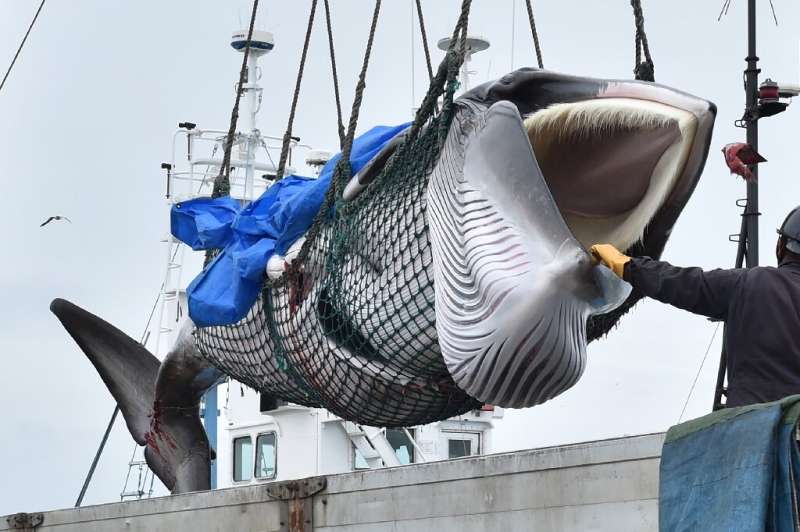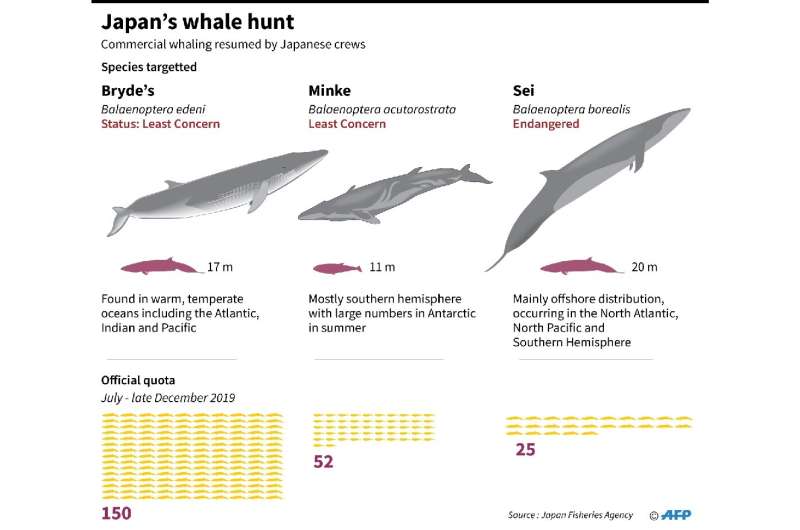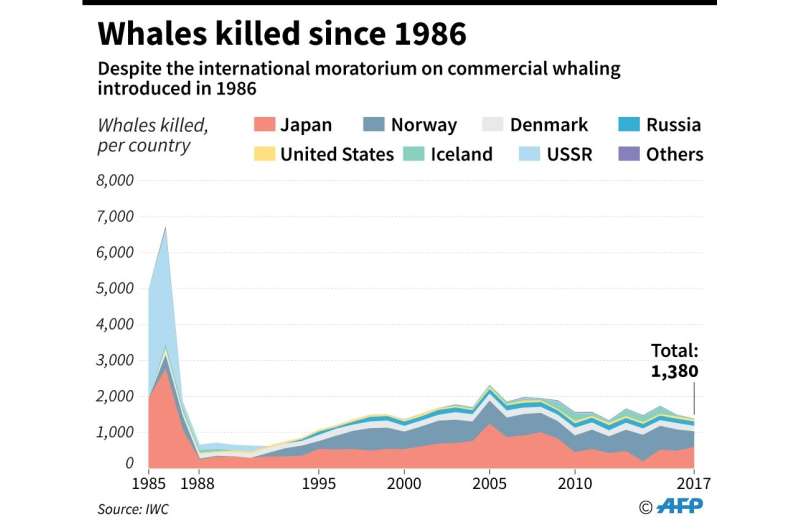Whales targeted by Japan face extinction threat

One of three species Japan has targeted in resuming commercial whaling Monday is threatened with extinction, and sub-populations of the other two are severely depleted as well, according to experts.
After pulling out of the International Whaling Commission (IWC) at the end of last year, Japan announced it would allow 227 of the giant sea mammals to be harpooned within its territorial waters—extending 200 nautical miles (370 kilometres) from its coast—before the end of December.
The commission's 1986 moratorium on whaling forbids all whaling, though a trio of countries, including Japan, flouted the ban through loopholes while remaining within the IWC.
Japan's new self-arrogated quota—which could be renewed or changed next year—includes 150 Bryde's, 52 minke and 25 sei whales.
One of these species, the sei, is listed at "endangered" on the International Union of the Conservation of Nature's Red List, which has assessed the conservation status of some 100,000 animals and plants.
The sei—at 20 metres (645 feet), the biggest of whales after the blue and the fin—was the main target of Japan's ostensibly "scientific" whaling from the early 2000s until 2017.
'Severely depleted'
The Red List classifies Bryde's and minke whales "of least concern," meaning they are not currently threatened with extinction.

But these assessments obscure a more nuanced reality that could spell trouble for sub-groups of the species as well, according to Justin Cooke, a long-standing member of the IWC's scientific committee and a member of the IUCN's Cetacean Group.
"There are two types of minke whale exploited off the coast of Japan," he told AFP.
"The one found in coastal waters—in the Sea of Japan, the East China Sea and the Yellow Sea—is quite severely depleted due to a long history of catches by Japan and South Korea."
Besides those targeted by whalers, others die after getting caught up in netting set for fish, he explained.
Known as the "J stock", the coast-hugging minke (Balaenoptera acutorostrata) are highly unusual among baleen, or filter-feeding, whales because they breed during the summer rather than the winter.
Surveys by Japanese and South Korean fisheries agencies have estimated their numbers at about 1,500, Cooke said in an interview.
The more plentiful "O stock" minke—which breed in summer and number about 25,000—are found further north in the Sea of Okhotsk, in Russian waters.

Whale watching
As with other types of whales, including orca, sub-populations of the same species can develop highly distinct behaviour patterns, which has led some biologists to describe these differences as "cultural".
There are two known sub-species of the larger Bryde's whales—also filter feeders—that grow up to 17 metres (55 feet) in length.
Japan stopped hunting Bryde's in 1987, but re-authorised yearly catches in international waters of 50 individuals starting in 2000, again for supposedly "scientific" research.
The North Pacific population—found mostly in the middle range of Japan's exclusive economic zone—was recently estimated at just over 26,000 by the IWC's scientific committee.
The other sub-species is found in Japan's southern waters and supports a local whale-watching industry. Also known as Eden's whale, they number just under 170, according to a 20-year old stocktake, Cooke said.
For the endangered Sei whale, experts disagree on how to characterise its population.
"Japanese scientists insist that there is only one (population) in the whole North Pacific," said Cooke. "But they have only collected data from the offshore area."
A competing hypothesis is that the region is home to five distinct populations, including one along the western coast that will now be hunted for its meat.
The latest estimate for this sub-group is about 400, Cook said.
© 2019 AFP



















